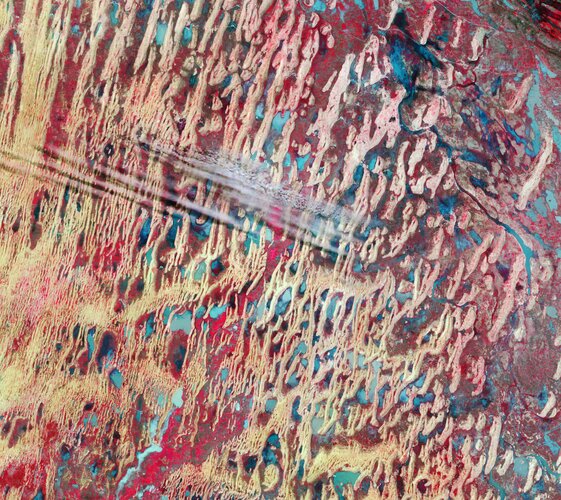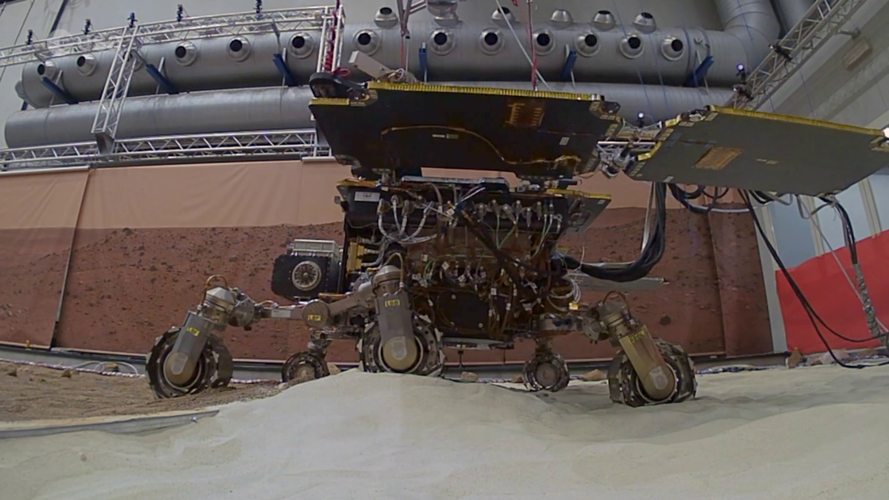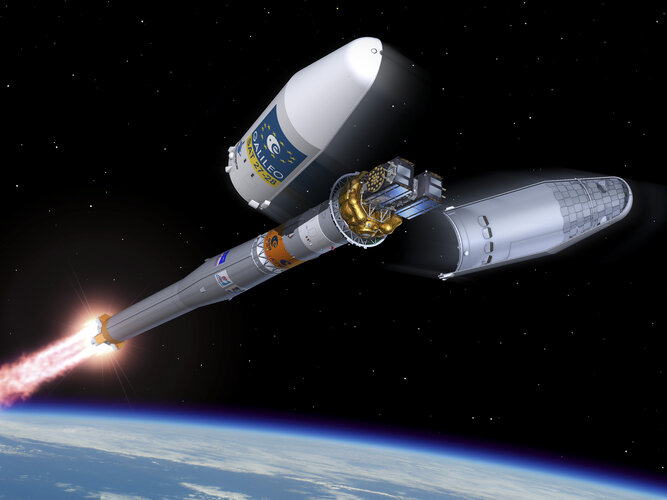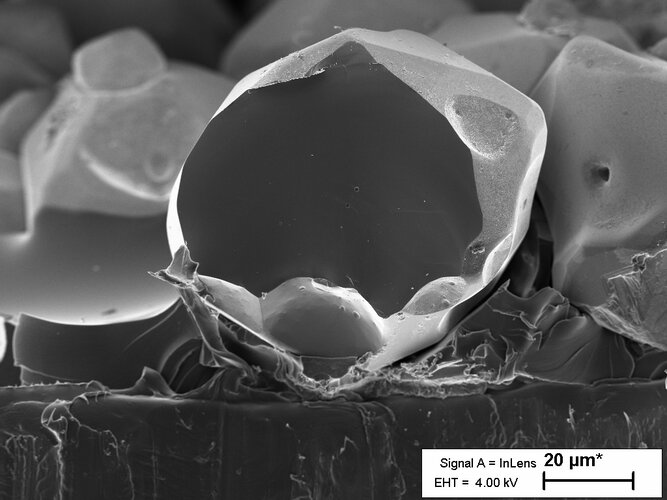
Copernical Team
Earth from Space: White Nile, Sudan

A part of the White Nile state in Sudan is featured in this false-colour image captured by the Copernicus Sentinel-2 mission.
Rover escapes from sand trap
 Video:
00:01:09
Video:
00:01:09
The ExoMars rover used in the Earth-based Mars Terrain Simulator makes escaping from a sand trap look easy in this exercise.
The rover initially has its front two wheels almost completely buried in sand, but easily escapes using its unique wheel-walking mode.
It takes about 20 minutes to complete the 2 m drive – slow and careful being the key to getting out of a difficult situation.
Rovers on Mars have previously been caught in sand, and turning the wheels dug them deeper, just like a car stuck in mud or snow. To avoid this, the ExoMars rover Rosalind Franklin
DARPA's ReSource Program turns waste into purified products, food
 Launched in 2021, DARPA's ReSource program aims to revolutionize how the military procures critical supplies on the battlefield by engineering self-contained, integrated systems that rapidly produce large quantities of supplies from feedstock collected on-site.
Performer teams are tasked with developing systems to break down mixed waste, including common plastics, reformulate the waste at
Launched in 2021, DARPA's ReSource program aims to revolutionize how the military procures critical supplies on the battlefield by engineering self-contained, integrated systems that rapidly produce large quantities of supplies from feedstock collected on-site.
Performer teams are tasked with developing systems to break down mixed waste, including common plastics, reformulate the waste at Team builds first living robots that can reproduce
 To persist, life must reproduce. Over billions of years, organisms have evolved many ways of replicating, from budding plants to sexual animals to invading viruses. Now scientists have discovered an entirely new form of biological reproduction - and applied their discovery to create the first-ever, self-replicating living robots.
The same team that built the first living robots has discove
To persist, life must reproduce. Over billions of years, organisms have evolved many ways of replicating, from budding plants to sexual animals to invading viruses. Now scientists have discovered an entirely new form of biological reproduction - and applied their discovery to create the first-ever, self-replicating living robots.
The same team that built the first living robots has discove Space Force General says daily attacks on US satellites are 'Sending a Message'
 In recent weeks, the US media outlets have been ramping up fears about adversaries especially China - allegedly planning different ways to target the United States and beefing up its weaponry in order to do so. Under this pretext, calls have emerged for Washington to "catch up??
US Space Force General David Thompson said that American satellites are being attacked "every single day" by adv
In recent weeks, the US media outlets have been ramping up fears about adversaries especially China - allegedly planning different ways to target the United States and beefing up its weaponry in order to do so. Under this pretext, calls have emerged for Washington to "catch up??
US Space Force General David Thompson said that American satellites are being attacked "every single day" by adv Watch Galileo launch on night of 3-4 December

The earliest launch date for Europe’s latest Galileo satellites is now during the night of 3-4 December.
Tiny crystal of power
 Image:
Tiny crystal of power
Image:
Tiny crystal of power An eight-hour year
 As far as extrasolar planets go, 'GJ 367 b' is a featherweight. With half the mass of Earth, the newly discovered planet is one of the lightest among the nearly 5000 exoplanets known today. It takes the extrasolar planet approximately eight hours to orbit its parent star. With a diameter of just over 9000 kilometres, GJ 367 b is slightly larger than Mars.
The planetary system is located ju
As far as extrasolar planets go, 'GJ 367 b' is a featherweight. With half the mass of Earth, the newly discovered planet is one of the lightest among the nearly 5000 exoplanets known today. It takes the extrasolar planet approximately eight hours to orbit its parent star. With a diameter of just over 9000 kilometres, GJ 367 b is slightly larger than Mars.
The planetary system is located ju Bolstering planetary biosecurity in an era of space exploration
 The search of life beyond our world is an exciting venture that may yield an enormous discovery in the not-too-distant future. However, space agencies around the world, including NASA and the European Space Agency, have long been aware of the potential risks of biological contamination and have set in place planetary protection policies. In the face of increasing space missions, including those
The search of life beyond our world is an exciting venture that may yield an enormous discovery in the not-too-distant future. However, space agencies around the world, including NASA and the European Space Agency, have long been aware of the potential risks of biological contamination and have set in place planetary protection policies. In the face of increasing space missions, including those Sols 3314-3315: Bountiful, Beautiful Boulders!
 The engineers at JPL responsible for driving Curiosity yet again delivered a perfect drive to some boulders that the science team have been interested in investigating. The large boulders are thought to represent the darker, resistant rocks exposed just above us that cap the underlying less resistant, lighter coloured rocks we have been driving over.
The caprocks and boulders both show t
The engineers at JPL responsible for driving Curiosity yet again delivered a perfect drive to some boulders that the science team have been interested in investigating. The large boulders are thought to represent the darker, resistant rocks exposed just above us that cap the underlying less resistant, lighter coloured rocks we have been driving over.
The caprocks and boulders both show t 
